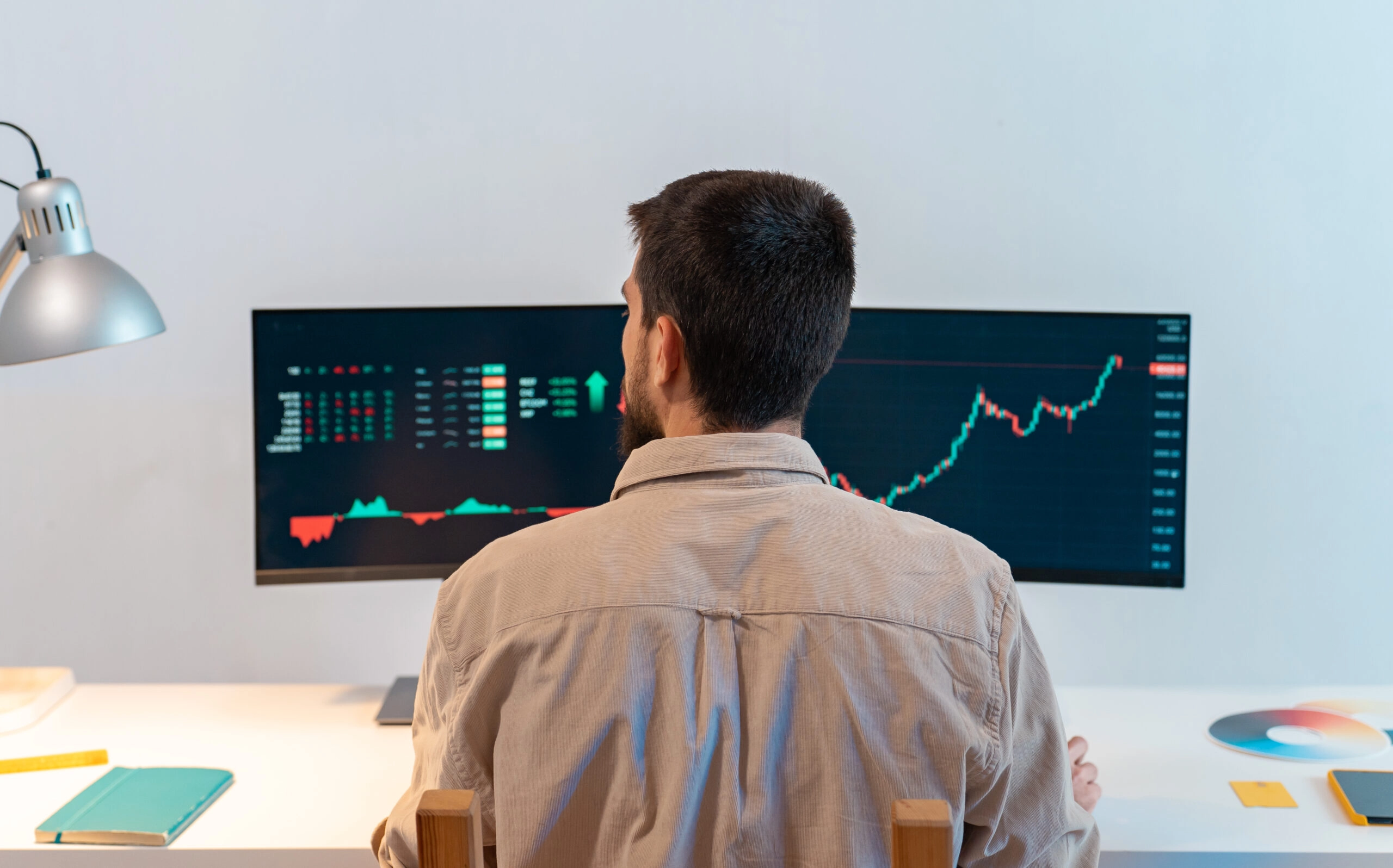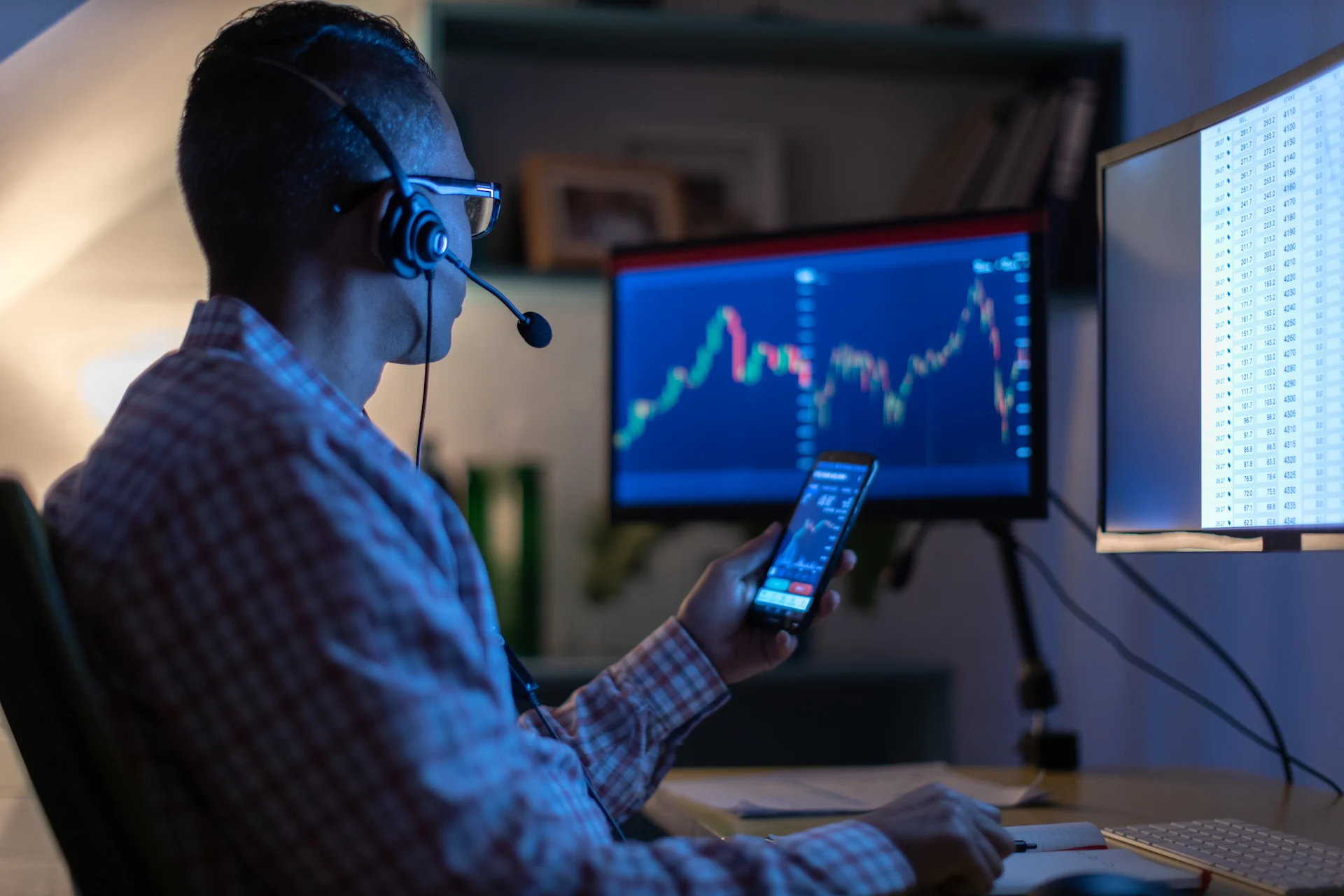Ever placed an order and watched it fail because your buying power did not match your plan? Understanding what day trading buying power means changes how you size positions, use margin, and stay inside pattern day trader rules. This guide gives clear, practical Day Trading Tips so you can see how intraday buying power is calculated, how leverage and account equity affect trade size, and how to maximize your trading potential while staying within regulatory limits.
To apply these ideas with real skin in the game, Goat Funded Trader offers a funded prop firm account that increases your available buying power and lets you practice position sizing, margin use, and risk control under live conditions without putting up the full capital yourself.
Understanding Margin and Day Trading

Understanding margin and day trading is essential for traders looking to leverage their capital for potentially higher returns. Margin trading involves opening a margin account with a broker, where the trader borrows funds to buy or sell shares. This borrowed money cannot be withdrawn; it is only used to execute trades. The shares held in the trader’s portfolio serve as collateral for the borrowed capital.
Leverage is a key concept in margin accounts. It allows traders to control a larger position in the market with a smaller amount of their own money. For example, with standard margin, a broker might offer 2-to-1 leverage, meaning a trader can purchase twice the value of their actual cash balance. For day trading, buying power, this leverage can increase up to 4-to-1, significantly amplifying trading capacity.
Day trading itself involves buying and selling the same security within a single trading day. When conducted in a margin account, this activity is closely regulated. The Financial Industry Regulatory Authority (FINRA) defines rules for pattern day traders, those who execute four or more day trades within five business days. Such traders must maintain a minimum equity of $25,000 in their margin accounts.
Margin requirements include an initial margin deposit and a maintenance margin balance. If the account value drops below the maintenance margin level due to losses, the trader receives a margin call, requiring them to deposit additional funds or close positions. Failure to meet margin calls can lead to restrictions on the account and loss of margin trading privileges.
Using margin in day trading multiplies both potential profits and losses. While it can allow for greater market exposure and more frequent trades, it also carries the risk of amplified losses if the market moves against the trader's position. Managing these risks through careful monitoring and adherence to margin rules is crucial.
Margin trading in day trading is a powerful tool for increasing buying power and trading flexibility. However, due to its leveraged nature and associated risks, it is best suited for experienced traders who understand market volatility and risk management.
For traders looking to enter these fields with guidance and support, prop firms like Goat Funded Trader offer a platform to learn, share insights, and access funding opportunities designed specifically for active traders aiming to leverage margin and day trading strategies effectively.
Funded accounts from a prop firm give you defined buying power and firm rules that can bypass retail PDT constraints, often in exchange for clear risk limits and profit split arrangements. Many firms provide simulated account ramps, instant funding, and higher intraday leverage, but they still enforce house margin, intraday limits, and daily loss thresholds to protect capital. Interested in funded trading as a way to scale buying power?
Get 25-30% off Today - Sign up to Get Access to up to $800 today.
Goat Funded Trader is a prop firm that gives you access to simulated accounts up to $800K with the most trader-friendly conditions in the industry, including no minimum targets, no time limits, triple paydays, and up to 100 percent profit split backed by a 2-day payment guarantee with a $500 penalty for delays. Choose customizable challenges or instant funding, join over 98,000 traders who have collected more than $9.1 million in rewards, and sign up to Get Access to up to $800 today with 25 to 30 percent off.
What is Day Trading Buying Power?

Day Trading Buying Power (DTBP) is the amount of money available to a trader for making day trades within a single trading day. A day trade involves buying and selling the same stock, ETF, or option on the same business day.
DTBP applies mainly to traders with margin accounts who are classified as pattern day traders. Being a pattern day trader means executing at least four day trades within five consecutive business days. When flagged as a pattern day trader, brokers require maintaining a minimum account balance of $25,000 to continue day trading. This balance usually excludes certain accounts, such as bond, high-yield cash, treasury, or crypto accounts.
The core of DTBP is that it allows traders to use leverage to increase their buying capacity for intraday trades. Specifically, the buying power is generally calculated as four times the excess maintenance margin in the trader's account from the previous day's close. Excess maintenance margin is the amount of equity in the account exceeding the minimum required to keep current positions. For example, with a $25,000 account, a trader typically has $100,000 in day trading buying power.
This leverage is higher than the standard margin buying power, which is usually twice the cash held, to enable more active, intraday trading. However, brokers may adjust or limit this leverage based on their risk tolerance policies.
Understanding DTBP is crucial for active traders as it dictates how much capital they can deploy in rapid trading scenarios while complying with regulatory requirements designed to mitigate the risk inherent in frequent trading.
Day Trading Buying Power is a multiple (commonly four times) of the trader's excess margin, providing amplified buying capacity for day trades, contingent on maintaining a minimum $25,000 account balance and classification as a pattern day trader in a margin account.
Related Reading
- Can You Make Money Day Trading
- How Old Do You Have to Be to Day Trade
- Options Trading vs Day Trading
- Day Trading Success Stories
- Day Trading Crypto vs Stocks
- Day Trading Psychology
- Day Trading as a Side Hustle
- Why is Day Trading Restricted
How Is Day Trading Buying Power Calculated?

Day trading buying power is based primarily on the equity in your margin account that exceeds the required minimum maintenance margin, also called the maintenance margin excess. This excess represents how much your account's equity surpasses the regulatory minimum margin balance needed to hold your positions.
In practice, your DTBP is typically four times (4X) of this maintenance margin excess. This multiplier reflects regulatory requirements for pattern day traders that allow them to trade with leverage intraday.
A Practical Example of Calculating DTBP
Suppose your margin account holds $50,000 worth of marginable securities. The brokerage’s margin requirement might be 50%, meaning you need to maintain $25,000 in margin. The difference, or margin excess, is therefore $25,000.
Margin Account Value
$50,000
Margin Requirement
$25,000
Margin Excess
$25,000
Using the Standard 4X Multiplier
Day Trading Buying Power = $25,000 × 4 = $100,000
Alternatively, if you have $30,000 in cash not swept into another account, that can serve as margin excess:
Day Trading Buying Power = $30,000 × 4 = $120,000
When Does Your DTBP Update?
Your initial day trading buying power is determined at market open and can be viewed on your brokerage’s margin or account management interface. However, changes to your account balance, such as large deposits or sales during the trading day, do not increase your buying power until the next market day.
How Is DTBP Usage Monitored?
Brokerages use a system known as the Time and Tick method to track how much of your day trading buying power you use throughout the day. Instead of simply summing the total value of all day trades, this method considers only your open positions at any given moment.
What Does This Mean?
- When you open a position, your DTBP decreases by the position size.
- When you close a position, the initial buying power is restored.
- You can execute multiple round-trip trades (buy and sell) without increasing your margin call risk, as long as your open positions never exceed your DTBP.
Example of DTBP Usage
If you have $50,000 in DTBP, the following sequence would not trigger a margin call:
- Buy $50,000 of stock A (open position uses full DTBP).
- Sell $50,000 of stock A (opens no positions, DTBP fully restored).
- Repurchase $50,000 of stock A (DTBP used again).
- Sell $50,000 of stock A again (DTBP fully restored).
- Despite trading $100,000 in total volume, your usage at any time does not exceed $50,000, so no margin call occurs.
However, if you open a $10,000 position in stock B while your $50,000 position in stock A is still open, that sums to $60,000 in open exposure, exceeding your $50,000 buying power. This would lead to a day trade margin call.
Overnight Margin Considerations
Day trading buying power applies only to intraday trades. If you hold positions overnight, the standard margin rules apply, which typically require only a 2:1 leverage ratio. That means you can only maintain twice your equity in overnight margin positions, which results in much lower buying power than during the trading day.
Practical Steps You Can Take Right Now
Check your broker’s margin disclosure and request a clear statement of how DTBP is calculated in your account. Watch your excess maintenance margin at the close of each day to know the buying power available the next morning. Consider practicing in a simulator or using smaller leverage until you understand how intraday swings affect margin calls. Want help translating these rules to your specific broker or trading plan?
Get 25-30% off Today - Sign up to Get Access to up to $800 today.
Goat Funded Trader is a prop firm that gives you access to simulated accounts up to $800K with the most trader-friendly conditions in the industry, including no minimum targets, no time limits, triple paydays, and up to 100 percent profit split backed by a 2-day payment guarantee with a $500 penalty for delays. Choose customizable challenges or instant funding, join over 98,000 traders who have collected more than $9.1 million in rewards, and sign up to Get Access to up to $800 today with 25 to 30 percent off.
Key Features of Day Trading: Buying Power

Enhanced Leverage for Intraday Trading
Day trading buying power gives you up to four times the cash in your margin account for trades you open and close the same trading day. For example, a $25,000 account can show $100,000 of intraday buying power. Brokers allow this higher intraday leverage because positions are closed before markets settle, which reduces overnight credit risk for the broker. This higher leverage amplifies gains and losses, so small price moves can produce large P&L swings and trigger rapid margin events.
How brokers calculate that figure ties to margin rules. Standard margin accounts commonly offer about 2 to 1 buying power for overnight positions, reflecting a 50 percent initial margin. Pattern day trading rules let brokers apply a 25 percent intraday margin requirement, which produces the roughly four times day trade buying power figure. Do you know what your broker reports as available day trade buying power at the start of the session? Brokers present that number using your maintenance margin excess from the prior close.
Strict Intraday Usage
The extra buying power applies only to trades opened and closed within the same trading day. If you leave a position open past the market close, you lose the intraday leverage and the position converts to regular margin treatment with higher capital requirements. That shift can create immediate margin shortfalls if you use the extra buying power and then hold overnight.
Brokers enforce this rule because overnight risk differs from intraday risk. They may automatically liquidate positions, restrict further buying power, or post a day trading margin call if you attempt to carry intraday margin into the next day without meeting the standard margin. Check your broker’s policy on how they handle positions that cross the close.
Pattern Day Trader Rule and Minimum Balance
The Pattern Day Trader rule flags accounts that execute more than three day trades within any rolling five-business-day window. Once flagged, the account needs at least $25,000 in equity to maintain day trading buying power. Equity means cash plus long market value minus outstanding obligations and unsettled trades as the broker calculates it.
If your account falls below the $25,000 threshold, brokers typically restrict you to limited buying power or block additional day trades until you restore equity. How do you track your count and your equity? Most platforms show day trade counts and available buying power in real time, so use those displays to avoid an unexpected restriction during the trading day.
Margin Account Requirement
Day trading buying power lives inside margin accounts because the broker extends credit against your securities. Maintenance margin excess from the prior day sets the baseline. A simple working formula many brokers use is day trade buying power equals maintenance excess times four, but firms vary that method by product and by account activity.
Initial and maintenance margins still matter. For non-day trade positions, brokers usually require roughly 50 percent initial margin and higher maintenance margin. For intraday use under PDT rules, brokers often accept a 25 percent intraday requirement, which creates the fourfold effect. Note that margin interest typically does not accrue on positions closed the same day, but if you carry a balance overnight, different margin rates apply.
Usage Restriction on Instruments and Market Hours
Day trade buying power generally applies to the same stock, ETF, or option bought and sold within the same day. It often covers both long buys and intraday short sales, provided you close them the same day. Extended hours and pre-market trades may not count toward intraday buying power or may be subject to different limits, depending on the broker.
Certain instruments face tighter controls. Penny stocks, thinly traded names, and some options series can carry higher margin requirements or outright intraday restrictions. Assignment risk on options and settlement differences on specific instruments can also alter how brokers calculate available buying power, so read the broker’s margin and product-specific rules before you scale position size.
Related Reading
- How Much Can You Make Day Trading With $1,000
- Day Trading Indices
- What is Liquidity in Day Trading
- Can You Start Day Trading With $100
- Day Trading as a Career
- Why is Pattern Day Trading Illegal
- Are Day Trading Courses Worth It
- Best Brokerage for Day Trading
- Best Cryptos for Day Trading
- Best Time Frame for Day Trading
Risks Of Using High Day Trading Buying Power

How High Buying Power Can Blow Up a Small Account
Buying power in day trading refers to the amount of capital you can deploy, often shown as a multiple of your account equity when you use margin. When brokers offer up to four times intraday buying power, traders can open much larger positions than their cash balance would allow. What happens when the market moves against you and that position swings quickly is a simple math problem, such as leverage magnifies losses as well as gains.
High buying power speeds up both profit and loss velocity. A 2 percent move against a leveraged position can wipe out 8 percent of your account when you use 4 to 1 intraday leverage. That accelerates margin calls and reduces the time you have to recover, especially when multiple positions move at once.
Pattern Day Trader Rule
The Pattern Day Trader rule says that if you execute four or more day trades in five business days in a margin account, you must keep at least twenty-five thousand dollars in the account. If your equity falls below that threshold, your broker can restrict day trading buying power until you restore the balance. Brokers flag accounts as PDT and apply limits on how much you can borrow for intraday trades.
Once flagged, your day trade buying power may be up to four times your excess maintenance margin while markets are open. That higher buying power increases position sizes and risk. Many retail traders do not plan for that swing in allowed leverage and find themselves overexposed after a few winning trades encourage bigger bets.
Margin Calls and Forced Liquidation
A margin call triggers when your unrealized losses push equity below the broker s maintenance requirements. The broker then requires you to deposit cash or sell positions to meet the shortfall. If you cannot add funds, the broker can liquidate holdings without asking further, often selling into weakness and locking in larger losses.
Forced liquidations can cascade. When multiple positions are liquidated at once, prices can gap down, and slippage can eat into any remaining buying power. That process can strip an account of usable capital and leave the trader with little chance to rebuild.
Intraday and Overnight Margin
Day trading buying power usually offers a 4:1 leverage ratio during market hours, but that drops to 2:1 for positions held overnight. Brokers raise maintenance requirements after the close because news and events outside market hours can cause opening gaps. Holding a trade past the bell exposes you to after-hours risk and to higher margin calls.
Traders who forget the overnight margin step up can suddenly find their broker lowering buying power at the worst time. That mismatch between intraday leverage and overnight requirements increases the chance of unexpected calls.
Cash Accounts Vs. Margin Accounts
Cash accounts do not use borrowed funds, so they do not trigger PDT rules. However, sales proceeds must settle before you can reuse them, typically two business days for stocks, which limits trade frequency. Margin accounts give immediate buying power via leverage, let you execute more day trades, and allow you to reuse proceeds faster. Still, they charge interest on borrowed amounts and expose you to margin calls.
Choosing between account types requires matching the account mechanics to your trading plan. Do you want repeated intraday exposure and quick reuse of capital, or do you prefer limited leverage and slower turnover?
Emotional and Psychological Risks
High buying power increases pressure. When much of your account sits in a few leveraged positions, fear and overconfidence grow faster than gains. Traders then cut winners too early or hold losers hoping for a reversal, which leads to bigger drawdowns. How do you react when a margin call arrives within minutes of a trade?
Disciplined position sizing, complex stop rules, and a prewritten trade plan reduce emotional drift. Practice controlling risk so stress does not drive poor choices during volatile price moves.
Get 25-30% off Today - Sign up to Get Access to up to $800 today.
Goat Funded Trader is a prop firm that gives you access to simulated accounts up to $800K with the most trader-friendly conditions in the industry, including no minimum targets, no time limits, triple paydays, and up to 100 percent profit split backed by a 2-day payment guarantee with a $500 penalty for delays. Choose customizable challenges or instant funding, join over 98,000 traders who have collected more than $9.1 million in rewards, and sign up to Get Access to up to $800 today with 25 to 30 percent off.
Regulatory Requirements Around Day Trading: Buying Power

Minimum Account Equity Requirement
A key regulatory requirement under FINRA (Financial Industry Regulatory Authority) mandates that pattern day traders maintain a minimum account equity of $25,000 at all times. This equity can be cash and eligible securities. If an account falls below this threshold, day trading privileges are suspended until the balance is restored to or above the minimum. This rule aims to protect investors by ensuring that those engaging in frequent day trading have sufficient capital to sustain potential losses and market volatility.
Pattern Day Trading Classification
In the U.S. stock markets, the term pattern day trader (PDT) refers to an individual or entity that executes four or more day trades within five business days. This classification is enforced to regulate high-frequency trading activities and monitor risk exposure appropriately. A day trade consists of buying and selling the same security within the same trading day, which inherently involves increased risk due to the short-term nature of the transactions. Brokerage firms monitor trading accounts continuously to identify whether an account meets this pattern classification.
Day Trading Buying Power and Margin Rules
Day trading buying power is the amount of capital available to a trader for executing intraday trades and is influenced by margin rules set by FINRA and brokerage firms. For pattern day traders, the buying power is generally four times the excess equity above the $25,000 minimum maintenance margin as of the close of the previous trading day.
This leverage allows a trader with $30,000 in equity (i.e., $5,000 above the minimum) to have day trading buying power of $20,000 (4 x $5,000). However, if an account exceeds this buying power, a day trading margin call is triggered.
If the margin call is not met within five business days, the trader's buying power is limited to twice the maintenance margin excess for that period. Failure to meet the call after the deadline results in restricted trading to cash-only transactions for 90 days or until the required funds are deposited.
Restrictions on Increasing Buying Power with Same-Day Deposits
According to regulations, buying power cannot be increased on the same trading day through additional deposits. Even if a trader deposits more funds intraday, these funds will not augment day trading buying power until the next business day. This constraint is designed to prevent sudden, potentially risky increases in leverage within a single session, protecting both the trader and brokerage firms from unexpected exposures.
Risk Management Through Buying Power Adjustment
Traders can adjust their day trading buying power intraday by reducing risk. For instance, by closing positions early or selling off stocks before initiating new trades, a trader can lower their active exposure, effectively freeing up buying power for additional trades during the same session without violating margin rules. Will you set limits that keep you safely under the four times excess equity threshold?
Related Reading
- Best Rsi Settings for Day Trading
- Best Moving Average for Day Trading
- Day Trading Checklist
- Day Trading Technical Analysis
- Best Markets for Day Trading
- Day Trading Indicators
- Stocks for Day Trading
- Day Trading Books
- Best Tools for Day Trading
- Day Trading Rules
- Day Trader Salary
- Best Day Trading Stocks
- How to Day Trade for a Living
- Day Trading Patterns
- Best Stocks to Day Trade
- Is Day Trading Legal
Get 25-30% off Today - Sign up to Get Access to up to $800 today.

Goat Funded Trader gives access to simulated accounts up to 800K with the most trader-friendly conditions in the industry. You face no minimum targets, no time limits, and you can take advantage of triple paydays with up to 100 percent profit split. These larger accounts raise intraday buying power immediately, letting you scale position sizing without tying up personal capital.
Why Traders Choose Goat Funded Trader and How Payouts Work
More than 98,000 traders have collected over $9.1 million in rewards through our platform, backed by a 2-day payment guarantee that includes a $500 penalty for delays. We offer customizable challenges if you prefer to prove skill before scaling and instant funding options if you want to start trading right away. Want a funding path that fits your style and preserves buying power for active day trading?
How Goat Funded Trader Changes Your Buying Power Calculations
A funded account increases your account size and, therefore, your intraday buying power under most broker models. That expands leverage while keeping your personal capital protected. Choose the path that matches your strategy, then use the larger buying power to manage entries, scale into winners, and control risk without stretching your own margin. Which funding option fits the way you trade and the way you manage risk?
.svg)
.avif)



.avif)





.svg)

.svg)